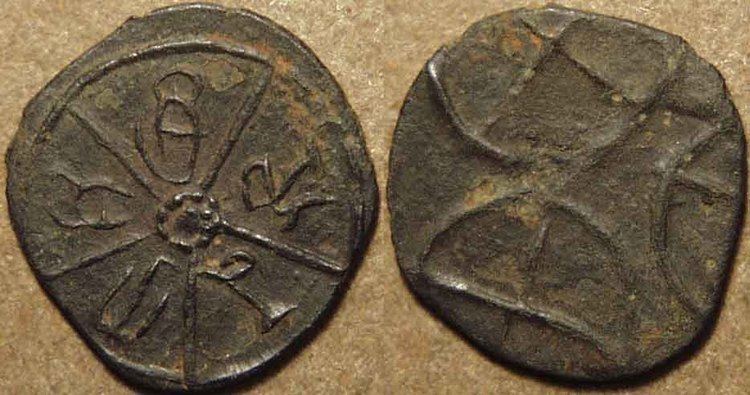Type Alphabet | ||
 | ||
Languages Kannada, Telugu, Sanskrit, Konkani, Marathi Time period 5th century-10th century | ||
The Kadamba script (known as Pre Old Kannada script) marks the birth of a dedicated script for writing Kannada. It is a descendant of the Brahmi script, an abugida visually close to the Kalinga alphabet. The Kadamba script was developed during the reign of the Kadamba dynasty in the 4th-6th centuries. The Kadamba script is also known as Pre-Old-Kannada script. This script later became popular in what is today the state of Goa and was used to write Sanskrit, Kannada, Konkani and Marathi.
Contents
The Kadamba script is one of the oldest of the southern group of South Asian scripts that evolved from the Brahmi script. By 5th century CE it became different from other Brahmi variants and was used in southern Indian states of Karnataka and Andhra Pradesh. It evolved into the Old Kannada script by the 10th century CE and was used to write Kannada and Telugu.
Many scripts were derived from Kadamba script, including the Pyu script.
History
During (325 to 550 AD) the rule of Kadambas major change in the Brahmi script evolved into Kadamba Kannada script, letters were shorter and round in shape. During (325 to 1000 AD) the rule of Gangas southern parts of Karnataka the Kannada script used differently (also known as Ganga script) in rock edicts and copper plate inscriptions. During 6th to 10th century AD the Kannada script stabilized during the rule of Badami Chalukyas (called Chalukya script 500-1000 AD) and Rastrakutas.
The Old Kannada (Halegannada/Halekannada) script is the continuation of Kadamba script used to write Kannada and Telugu, basically the Old Kannada is also known as the Telugu-Kannada script.
Brahmi -> Kadamba -> Old Kannada -> Kannada and Telugu scripts
Similar scripts
Goykanadi, Bhattiprolu script, Salankayana script, Pallava script and Gupta script a family of alphasyllabaries or abugidas has some similarity.
Sinhala script is closely related to Grantha script and Old Khmer script (closely related to Kadamba-Pallava script) taken the elements from Kadamba script.
Indian Writing Systems Comparison:
Kadamba-Pallava script
During the rule of Pallavas, the script accompanied priests, monks, scholars and traders into South East Asia. Pallavas developed a script based on Brahmi, main characteristics of the newer script are aesthetically matched and fuller consonant glyphs. Similar to Pallava script, also visible in the writing systems of Chalukya, Kadamba, Vengi at the time of Ikshvakus. Brahmi design iwas slightly different of the scripts of Cholas, Pandyas and Cheras. Pallava script very first significant developments of Brahmi in India, take care in combining rounded and rectangular strokes and adding typographical effects, was suitable for civic and religious inscriptions. Kadamba-Pallava script evolved into early forms of Kannada and Telugu scripts. Glyphs become more rounded and incorporate loops because of writing upon leaves and paper. The scripts which are descended from the Kadamba-Pallava script are Pyu script, Burmese, Mon, Kawi, Lanna, Tham, Khom, Khmer, Thai, Lao, Sinhalese and Tai Lue.
